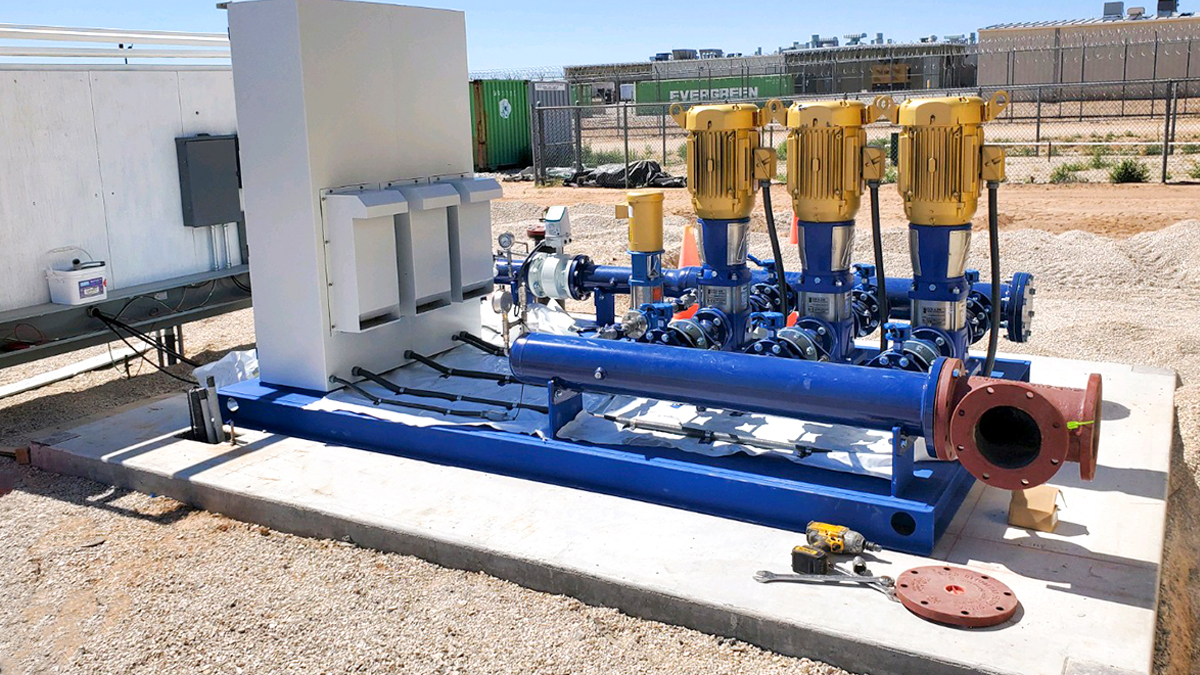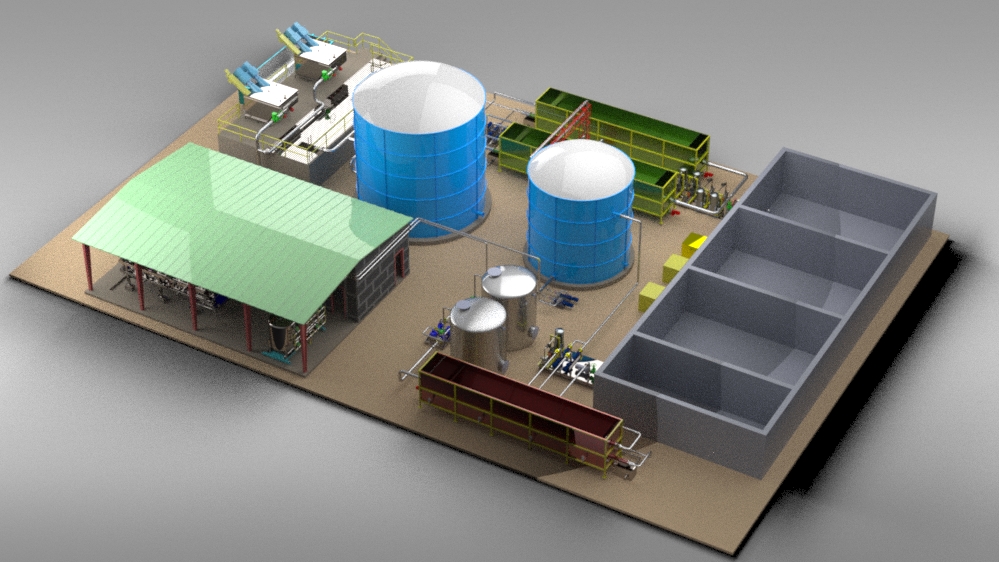Atmospheric Water Generator Market to Reach $10.8 Billion Globally by 2033: A Booming Industry with a 14.8% CAGR
The Future of Water Supply: Atmospheric Water Generator Market Set to Reach $10.8 Billion by 2033
With a remarkable CAGR of 14.8%, the atmospheric water generator (AWG) market is expected to play a key role in addressing global water scarcity.
Introduction
The global atmospheric water generator (AWG) market is poised for impressive growth over the next decade, with forecasts indicating it will reach $10.8 billion by 2033, according to a recent report by Allied Market Research. The market is expected to grow at a compound annual growth rate (CAGR) of 14.8% from 2024 to 2033. This rapid expansion reflects the increasing demand for sustainable, innovative water solutions in response to the growing global water crisis.
As climate change, population growth, and industrial activities intensify the strain on freshwater resources, atmospheric water generators have emerged as a promising technology capable of producing potable water directly from the air. In this article, we will explore the factors driving the growth of the AWG market, the technology behind atmospheric water generation, and the potential for this industry to revolutionize global water access.
What is an Atmospheric Water Generator?
An atmospheric water generator (AWG) is a device that extracts moisture from the air and converts it into clean, drinkable water. By utilizing the natural humidity present in the atmosphere, AWGs offer a sustainable alternative to traditional water sources, especially in regions facing severe water shortages.
The two primary technologies used in AWGs are:
- Cooling Condensation: This is the most common technology, where warm air is cooled to below its dew point, causing water vapor to condense into liquid water.
- Desiccant-Based Systems: These systems use absorbent materials to capture moisture from the air and then release it when heated, turning the captured vapor into water.
AWGs have a wide range of applications, including residential, commercial, and industrial use, as well as providing water in remote areas, disaster relief zones, and arid regions where access to clean water is limited.
Key Drivers of Growth in the AWG Market
Several factors are fueling the growth of the global atmospheric water generator market, pushing it toward the projected $10.8 billion by 2033. These drivers highlight the increasing recognition of AWGs as a viable solution to the global water scarcity challenge.
- Growing Global Water Scarcity
One of the primary drivers of the AWG market is the growing global water scarcity. According to the United Nations, more than 2 billion people live in countries experiencing high water stress, and by 2025, nearly half of the world’s population will be living in water-stressed areas. Climate change, population growth, and industrialization are exacerbating the availability of freshwater resources, making AWGs an attractive solution for producing clean, potable water.
Countries in arid regions, particularly in the Middle East, Africa, and parts of Asia, are expected to be key adopters of AWG technology due to the chronic water shortages they face. AWGs provide a decentralized, off-grid solution that does not rely on traditional water sources like rivers, lakes, or groundwater.
- Technological Advancements in AWGs
Ongoing technological advancements in AWG systems are making them more efficient, cost-effective, and accessible. New innovations in materials science, energy efficiency, and humidity-capturing technologies have improved the performance of AWGs, allowing them to generate higher volumes of water at lower operational costs.
For instance, advancements in desiccant-based systems have increased their ability to capture water in low-humidity environments, making AWGs viable even in desert regions. These innovations are expected to drive market growth as manufacturers continue to develop more affordable and scalable solutions.
- Government and Corporate Support for Sustainable Water Solutions
Governments and corporations are increasingly recognizing the need for sustainable water solutions in the face of rising water demand and climate change. As a result, many governments are offering incentives, grants, and subsidies for the adoption of green technologies, including AWGs.
In addition, corporate sustainability initiatives are driving investment in AWG technology. Many industries, particularly in the manufacturing, agriculture, and energy sectors, are looking to reduce their water footprint and secure reliable water supplies. AWGs offer a solution that aligns with corporate environmental, social, and governance (ESG) goals, contributing to both sustainability and operational resilience.
- Increasing Demand for Portable and Off-Grid Water Solutions
As natural disasters, conflicts, and rural development increase the need for portable and off-grid water solutions, the demand for AWGs is expected to rise. AWGs are already being used in disaster relief efforts, remote military operations, and rural communities where traditional water infrastructure is lacking or unreliable.
In emergency situations, such as after hurricanes, earthquakes, or wildfires, AWGs can provide immediate access to drinking water without the need for bottled water shipments or reliance on damaged infrastructure. The versatility and mobility of AWGs make them an ideal solution for humanitarian aid and disaster response teams.
Market Segmentation of AWG
The atmospheric water generator market can be segmented based on product type, application, and region.
- By Product Type
- Cooling Condensation AWGs: These AWGs are the most commonly used and account for the majority of market share. They are suitable for a wide range of environments with moderate to high humidity.
- Desiccant-Based AWGs: These are gaining traction due to their ability to operate in low-humidity conditions, making them suitable for extremely arid regions.
- By Application
- Residential: Home-based AWGs are designed for personal use, providing an alternative to bottled water and reducing dependence on municipal water supplies.
- Commercial: Businesses, hotels, and schools are adopting AWGs to reduce their water consumption and ensure a reliable water supply.
- Industrial: Industries that require large volumes of water, such as agriculture, manufacturing, and power generation, are increasingly turning to AWGs to meet their water needs.
- Emergency and Disaster Relief: AWGs are a critical tool in providing water during natural disasters or in areas where infrastructure is damaged or nonexistent.
- By Region
- North America: The region is expected to see significant growth due to increasing demand for sustainable water solutions and technological innovations in the AWG sector.
- Middle East & Africa: These regions are likely to be key markets for AWG systems due to chronic water scarcity and the need for off-grid solutions.
- Asia-Pacific: Growing populations, rapid industrialization, and increasing water demand in countries like India and China are expected to drive AWG adoption.
- Europe: European countries, with their focus on sustainability and environmental goals, are also expected to be strong adopters of AWG technology.
Challenges Facing the AWG Market
While the AWG market is set for robust growth, there are still challenges that need to be addressed to unlock its full potential:
- High Initial Costs: Although technological advancements have improved the efficiency of AWGs, the upfront costs of purchasing and installing these systems can still be a barrier for widespread adoption, particularly in developing regions.
- Energy Consumption: Some AWG systems, especially cooling condensation units, require significant energy to operate, which could offset their environmental benefits in areas that rely on fossil fuels for electricity.
- Awareness and Adoption: Many consumers and businesses are still unaware of the potential benefits of AWGs, and greater efforts in marketing, education, and demonstration projects will be needed to boost adoption.
Conclusion: A Promising Future for the AWG Market
The atmospheric water generator market is on a path to significant growth, with projections indicating it will reach $10.8 billion by 2033. As the world grapples with increasing water scarcity, AWG technology offers a sustainable and innovative solution to provide clean, potable water in regions facing severe shortages. With a forecasted CAGR of 14.8%, the industry is set to transform how we access and consume water, particularly in areas where traditional water sources are unreliable or unavailable.
For companies like Alpha Water & Power, the rise of the AWG market presents an exciting opportunity to lead the way in sustainable water solutions, ensuring access to clean water for communities, businesses, and industries around the globe.
FAQs
What is an atmospheric water generator (AWG)?
An AWG is a device that extracts moisture from the air and converts it into clean drinking water using technologies like cooling condensation or desiccant-based systems.
Why is the AWG market growing so rapidly?
The AWG market is growing due to increasing global water scarcity, technological advancements, government support for sustainable water solutions, and rising demand for off-grid water systems.
What are the main applications of AWGs?
AWGs are used in residential, commercial, industrial, and emergency settings to provide clean drinking water, reduce water consumption, and support disaster relief efforts.
What challenges does the AWG market face?
Key challenges include high initial costs, energy consumption, and the need for increased awareness and adoption of AWG technology.
What regions are expected to see the most growth in the AWG market?
Regions like North America, the Middle East, Africa, and Asia-Pacific are expected to see significant growth due to increasing water demand and the need for sustainable water solutions.








